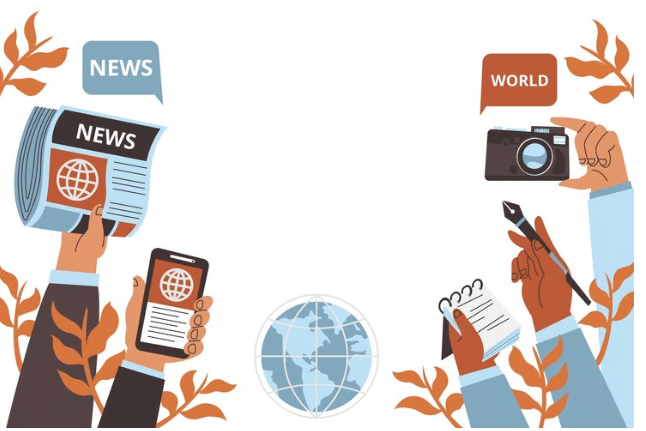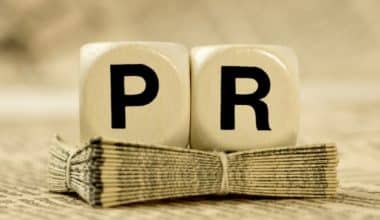Public relations is a highly measured and strategic industry, but without a solid media relations plan, your efforts might be in vain. Every PR professional should be aware of how to build a media relations strategy as it has the power to make or break a brand’s PR campaign. When it comes to PR campaigns, media relations are always innovative since they promote favorable press while reducing negative coverage. So what exactly is media relations PR? In a nutshell, it’s the art of controlling communications with the media to influence public opinion. Creating a solid framework for media relations is necessary. In this article, I will explore best practices for improving your media relations strategy in PR, infused with ideas, data, and individual experiences attached to my professional
Key Takeaways
- A well-executed Media relations strategy is crucial for PR success as it can significantly increase brand awareness, establish credibility, and drive website traffic and sales.
- Good public relations may raise sales and website traffic, establish credibility, raise brand awareness, and even assist with crisis management.
- Establishing authentic connections with journalists goes beyond news releases interact with them on social media; providing insightful commentary and places a high value on open communication.
What is a Media Relations Strategy?
A media relations strategy serves as your guide for efficiently handling media relations. A solid media relations strategy defines your objectives, target market, main talking points, and methods for interacting with the media. Media Relations are the connection between a company or a PR (public relations) specialist and the media. PR professionals may raise awareness of their brand’s mission, story, and overall message with the aid of media relations. Public relations teams want to optimize brand exposure, and journalists are constantly searching for captivating and inventive material. That gap is filled by a media relations strategy, which links journalists eager to write real, audience-engaging stories with PR specialists. Knowing who to send a press release to when there is news to tell is crucial since the press release serves as both a channel for the mutually beneficial relationship between businesses and journalists and a vital source of news.
What is the Role of Media Relations in PR Campaigns?
In PR campaigns, media relations are similar to the extent of your audience.
- Increased Company Visibility: A 2023 study found that over 90% of journalists rely on PR pitches for story ideas. That means getting your foot in the door with the right media outlets can put your brand in front of millions.
- Enhanced credibility: Seeing your brand featured in a trusted publication is like getting a celebrity endorsement for your expertise. It builds trust and positions you as a thought leader in your industry.
- Boosted website traffic and sales: Earned media coverage (articles, interviews, etc.) typically drives higher-quality traffic to your website compared to paid advertising. This can translate to more leads and sales.
A desirable example I could provide was during my sister’s time as a PR consultant for a software firm. She had to contend with the difficulty of entering a crowded market. She was able to acquire features in reputable magazines by cultivating contacts with her friends who are tech bloggers and industry journalists, which greatly increased her work and the company’s awareness.
Benefits of Media Relations Strategy
There are plenty of benefits to media relations. Some of our personal favourites include:
- Effectiveness: A carefully thought-out media relations plan optimizes your brand’s “free” and organic exposure rather than launching thousands of paid advertising efforts. Even while time and effort are still expensive, having the correct journalist cover your story may be quite beneficial.
- Brand Awareness: A firm that people are familiar with has a far higher chance of gaining their business, particularly if they have heard positive things about it from an influencer they follow or have seen it on their preferred news website.
- Strengthen relationships: Having a successful media relations plan can help you cultivate important connections with journalists. If your PR staff presents them with a compelling tale up front, these journalists will have greater faith in you later on.
- Crisis Management: Having a network of established media contacts is crucial for relationships in times of crisis.
How to Build Media Relations?

Although obtaining favourable press coverage is PR’s main objective, a glowing front-page article in a national newspaper doesn’t happen by accident. This calls for a commitment to continuously strengthening good media relations, supported by a carefully thought-out and well-researched media relations strategy.
#1. Evaluate the Media Relations Landscape
Analyzing the businesses’ coverage of a subject requires an understanding of the media landscape. While some might make long-form contributions to thought leadership, others would concentrate more on reporting news from press releases. Gaining as much understanding as you can about their commissioning procedure is also crucial. When will the news staff be most open to receiving incoming pitches because they will be organizing content at that time? Who decides in the end if a tale is accepted or not? In PR campaigns, media relations are similar to the heartbeat of your outreach. They provide your brand the vitality it needs to remain relevant in the eyes of the general public. Developing and sustaining connections with writers, bloggers, and influencers who can truthfully and compellingly narrate your story
These are tips on Evaluating the Media Relations Landscape:
- Research Journalists: Understand their beats and interests. Tailor your pitches to align with their previous work.
- Build Genuine Relationships: Engage with journalists on social media, comment on their articles, and offer exclusive insights.
- Be Accessible: Ensure you are always available for comments, interviews, and follow-ups. Accessibility can set you apart as a reliable source.
#2. Create a Comprehensive Story
A solid media relations strategy defines your objectives, target market, main talking points, and methods for interacting with the media. In PR, exclusive storytelling is fundamental. Being able to condense the work that your firm does into a compelling, readable message is crucial when it comes to media relations. There’s no way a reader will grasp your main points or insights if a journalist finds them difficult to understand. In addition to building the foundation for enduring, mutually beneficial relationships with journalists, by adhering to these rules, you can make sure that your brand is more immediately comprehensible and identifiable to them. I distinctly recall helping a friend in the fashion industry launch a new collection. She sought my advice, and I carefully developed a media relations strategy. She conducted a thorough analysis to identify prominent fashion writers and influencers, established a schedule of outreach initiatives, and assembled a media kit. Her fashion publications and blogs featured her on several occasions as a result of the strategy, drawing attention to the launch.
Here are steps to create a media relations story that will help you improve:
- Define Your Objectives: What is your goal—product promotion, reputation management, or brand awareness? Your strategy is guided by specific aims.
- Identify Your Audience: Determine your target audience and adjust your messaging appropriately.
- Post Important Messages: Create succinct, persuasive messaging that is consistent with your brand’s values and goals.
- Create a Media List: Compile a list of relevant journalists, bloggers, and influencers.
- Plan Your Outreach: Schedule your pitches, follow-ups, and press releases.
#3. Develop Strong Media Partnerships
The secret lies in authenticity. True connections with journalists can result in coverage that is more significant and influential. Press release pitches are not the only way to cultivate connections with journalists. You can establish rapport and relationships with them in a variety of other ways. Conversations at events, informal briefings, and off-the-record discussions can all foster deeper engagement on industry themes while fostering relationships. Maintaining a communication line with media contacts can also be achieved by participating with their material on social media.
The following are the essential tips for developing a strong relationship:
- Be Truthful: Consistently give precise information. Media misrepresentation can undermine your credibility.
- Express Gratitude: To journalists by recognizing their efforts and thanking them for their coverage.
- Offer Value: Give readers access to company executives, specialized insights, and unique content.
#4. Grant Media Interviews

Media interviews provide you the chance to address your audience directly with your main points. To guarantee you stay on topic and showcase your company in the best possible light, they do, however, demand thorough planning. As you position your team as thought leaders, providing access to spokespeople also helps to build and maintain good media partnerships. Journalists are always open to hearing viewpoints that spark discussion or present a fresh perspective. But it’s crucial to keep an eye on content to make sure it’s fresh and pertinent for the particular journalist as well as larger industry discussions.
Publish Key Messages: Decide on the key ideas you want to get across and try saying them succinctly. This is how you go about media relations interviews::
- Expect Inquiries: Anticipate possible queries and formulate lucid, truthful answers.
- Hold Fictitious Interviews: To hone your speech and gain confidence, practice with coworkers and remain composed, even in the face of difficult inquiries.
- Follow-up: Write a thank-you note following the interview and offer to send more information if necessary.
#5. Assess and Analyze Media Attention
You must track and evaluate the results of your efforts to make improvements to your media relations plan. This entails keeping tabs on media attention, assessing the impact and tone of your story, and gauging the campaign’s overall efficacy. This will help you modify your approach and enhance subsequent pitches if you are about to launch a campaign to promote a new product line for your consumer products company.
Below are ways to measure media relations attention to PR:
- Use Media Monitoring Tools: They can help you track media coverage and analyze its impact.
- Examine Sentiment: Determine if the coverage is favourable, unfavourable, or neutral.
- Calculate the number of individuals who saw your story to measure reach.
- Track Engagement: Determine the amount of shares, comments, and likes your coverage has received.
- Modify Your Approach: Make use of the information you have gathered to enhance future campaigns and your media relations strategy.
#6. Leverage Social Media Platforms
Social media is an effective means for improving your media relations strategy in this present time. Social media sites like Instagram, LinkedIn, TikTok, and Twitter known as X can be used to distribute news, network with journalists, and establish your brand’s online presence. I have always advised an intern and entrepreneurs who has the mindset of growing into an expert in a field to leverage social media platforms as one of the effective ways of exposing your brand globally.
You can go through these tips to evaluate how to use social media platforms to your advantage.
- Identify Key Platforms: Determine which social media platforms your target journalists and influencers use.
- Participate Often: Engage in dialogue, share their articles, and leave comments on their postings.
- Distribute High-Quality Content: Post informative and interesting content frequently to maintain your brand at the top.
- Use Hashtags: Utilize industry-specific hashtags to increase the visibility of your posts.
Here is Lamphill Comprehensive Media Relations Strategy Template in PR
What is PR Media Relations?
Think of public relations as a large concert, where various instruments (such as press releases and social media) contribute to the overall perfect production. By cultivating strong relationships with journalists, bloggers, and influencers—people who can magnify your brand’s message and reach a broader audience. Media relations plays the role of the conductor. A staggering 84% of journalists still place a higher value on earned media coverage like think stories, mentions, and interviews than on paid advertising, according to a Media Report. Your relationship and the trust you establish with the media serve as your vital link to increased exposure.
Conclusion
Enhancing your PR media relations plan is a continuous activity that calls for commitment, sincerity, and initiative. You can improve your brand and accomplish your PR objectives by comprehending the function of media relations in PR campaigns, creating a thorough media relations plan, establishing genuine connections, and utilizing social media. Never forget that developing enduring connections founded on integrity and trust is essential to effective media relations. Your brand’s visibility and reputation will improve as you continue to interact with the media and hone your plan. How have you successfully built and maintained media relationships in your PR campaigns?
Related Articles
- WHAT IS MEDIA ANALYSIS: Definitions, Techniques, and Personal Insights
- The Only 6 PR Industry Trends That Actually Matter in 2024
- How to Craft an Effective Media Relations Strategy
- Media Relations: Everything You Should Know (Updated)






